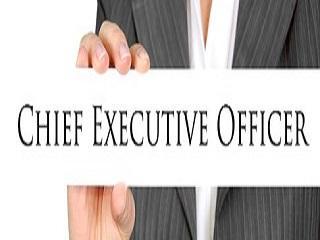How do CEO’s and Top Management Teams Actually Impact Organizational Performance?

What is the common denominator of the big success of companies like Apple or Facebook on the one hand, and the well-known failures such as Kodak and Yahoo on the other ? Well, most of the time we consider their (former) CEO’s as being responsible for their unique organizational performance, whether good or bad. The accountability and responsibility of leaders has been to the interest of stake-and share-holders for a long time, also in areas outside business. For example, many victories and defeats on the battlefield have been ascribed to generals (e.g. General Patton, Nelson, Robert G. Neville, the victorious unbeaten Russian General Suvorov; Marshall, 2006), the popularity of political parties has been strongly related to party leaders (Van den Brug & Mughan, 2007) and some think that mainly star actors drive movie success (Elberse, 2006).
But do leaders actually make a difference? In other words and applied to organizations: are individual characteristics of CEO’s such as leadership behavior, demographics, and education actually relevant, or is the specific environment and situation of crucial importance for firm performance? This is a long-lasting debate which, according to some (Wasserman, Nohria and Anand, 2010), will never be resolved.
In the meantime, both researchers and practitioners have fiercely tried to relate CEO-characteristics -ranging from their social networks ( Kirchmaijer & Stathopoulos, 2008), tenure (Hamori & Koyuncu, 2014) to their babyfaces (Livingstone & Pearce 2009)- with organizational performance. Simultaneously, research suggests this perspective needs to be nuanced: in many situations, the motivation and ability of a complete leadership team (Top Management Team, TMT) is required, instead of just a single high-performing individual (Hambrick, 2007).
This perspective takes the context of the CEO also into account and is known as theupper echelons perspective. It proposes that “the experiences, values, and personalities of the firm’s CEO and TMT members shape their interpretation of the environment, which in turn influences strategic choice and organizational effectiveness” (Colbert, Barrick, & Bradley, 2014: 352).
Using a sample of 94 CEOs and TMTs from American credit unions, Colbert, Barrick, and Bradley (2014) first explored how the personality of a CEO related to their transformational leadership. The same procedure was conducted for TMT members and average scores for the whole TMT were created. After one year, they assessed organizational financial performance and employee commitment for each credit union. Since getting access to actual personality-data from TMTs is quite challenging, this study added value to existing literature on the effect of demographics or transformational leadership of CEO’s and TMTs on organizational outcomes (Stoker, Grutterink, & Kolk, 2012). Using path-analyses, the researchers tested whether:
a) specific CEO-personality dimensions relate to firm performance through transformational leadership
b) specific personality dimensions and transformational leadership behavior of the TMT (averaged scores) relate to firm performance
c) personality and transformational leadership behavior are more important for organizational success than CEO and TMT demographics.
The researchers found that Conscientiousness –both from CEO’s as the average level in TMT’s- related directly to organizational performance. Moreover, transformational leadership of both agents (CEO and TMT) resulted in higher organizational commitment and performance. CEO their emotional stability and openness to new experience enhanced CEO transformational leadership, and subsequently performance and commitment. But the most interesting finding is that demographic variables such as (mean) age, (mean) tenure, and (mean) education of CEO’s and their TMTs, as well as the variance in education, sex, age and tenure of TMTs were altogether almost half as strong related to organizational performance compared to the effects of personality and transformational leadership.
Although CEO and TMT demographics are still important factors to predict organizational performance, this study adds new insights: it could be the interplay between CEO personality, leadership and the TMT that drives results.
Literature:
Colbert, A. E., Barrick, M. R., & Bradley, B. H. (2014). Personality And Leadership Composition in Top Management Teams: Implications For Organizational Effectiveness. Personnel Psychology, 67(2), 351-387.
Elberse, A. (2007). The power of stars: Do star actors drive the success of movies?. Journal of Marketing, 71(4), 102-120.
Van der Brug, W.,& Mughan, A. (2007). “Charisma, leader effects and support for right-wing populist parties.” Party Politics 13.1: 29-51.
Hambrick D. C., (2007).Upper echelons theory: An update. Academy of Management Review, 32, 334–343.
Hamori, M. & Koyuncu, B. (2014). Experience matters? The impact of prior CEO experience on firm performance. Human Resource Management.
Kirchmaier, T., & Stathopoulos, K. (2008). From fiction to fact: The impact of CEO social networks (No. 537). Manchester Business School working paper.
Livingston, R. W., & Pearce, N. A. (2009). The Teddy-Bear Effect Does Having a Baby Face Benefit Black Chief Executive Officers?. Psychological Science,20(10), 1229-1236.
Stoker, J. I., Grutterink, H., & Kolk, N. J. (2012). Do transformational CEOs always make the difference? The role of TMT feedback seeking behavior. The Leadership Quarterly, 23(3), 582-592.
Wasserman, N., Nohria, N., & Anand, B. (2010) “When Does Leadership Matter? A Contingent Opportunities View of CEO Leadership.” Chap. 2 in Handbook of Leadership Theory and Practice, edited by Nitin Nohria and Rakesh Khurana. Harvard Business Press.


